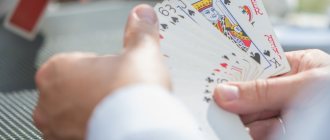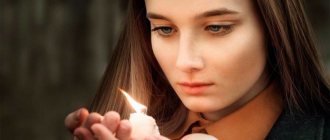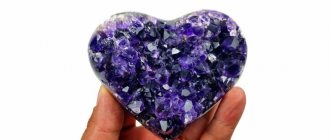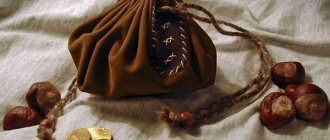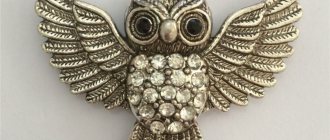If your horse rears, you risk losing your balance, falling, or kicking you, and your horse can lose his balance, fall, and get hurt.
A horse that rears while tied to a carriage may fall on the driver and passengers, injure itself, and destroy equipment and objects around it.
Once a horse learns this behavior to avoid work or express frustration, it is difficult to stop.
If you are a novice racer, it would be extremely dangerous to try to solve this problem yourself. Instead, you need to find a professional who can help you.
Causes
In 2013, the President of Turkmenistan fell from his horse after reaching the finish line of a competition. The problem of a horse misbehaving has always attracted attention. They are associated with certain habits of these animals.
They usually arise from the previous owner mistreating the horse. Hereditary propensity for such habits is very rare. If a horse kicks, there is always a reason for it. A horse usually kicks or tries to bite when it is scared.
Usually unpleasant situations remain in the animal’s memory as its methods of defensive action against external attack. In order to change habits, the first step should be to try to understand the specific reasons why an angry stallion may behave this way.
If you rear up
If you rear up
When there is such a tendency, it is important that the rider is able to determine the moment when she is about to do it.
How to tame a horse
Before rearing, the animal always stops, then moves its hind legs slightly forward, under the body, then sharply pushes off with its front legs and makes a sharp and characteristic movement of its head.
If the rider determines that this is about to happen, it is wise to send the horse forward using leg or spurs, without allowing him to fall.
Usually, after making several unsuccessful attempts in a row, she will gradually begin to give up this habit.
In extreme cases, when the problem cannot be solved in the usual way, a special part of horse harness can be used - a dowel.
It is possible that the rider missed the first signs of movement. In this case, it will help if the rider loosens the reins to allow him to lower himself onto his front legs. It will be helpful if the rider leans forward during this movement and wraps his arms around the horse’s neck.
If it tips over, the rider is in danger of falling from the horse, and must free his feet from the stirrups and jump to the side without releasing the reins. As soon as it rises, you need to jump on it and send it forward.
Types of figurines for home and office
The horse figurine can be presented in different forms:
- A festive horse is an image of a horse rearing up. If you use such a figurine or painting, you can attract victories and recognition into your life. Such a talisman would be most suitable for athletes, artists, musicians and people of other professions that involve regularly defending personal superiority. In this case, the horse symbol should be positioned correctly. It should not be placed directly in front of or behind a person, as this may cause injury.
- A winning horse is an image of a free horse depicted in a race, galloping with all its speed. Such a talisman will help you win competition, gain new achievements in your professional activities, and bring success. It should be chosen by people who are facing a competition, competition or tender. A winning animal helps raise authority among colleagues, but the horse depicted should not be saddled. Her image should be used to decorate a study or office.
- A gift white horse is a figure of a horse carrying precious things. This Feng Shui talisman can be used by anyone who wants to attract wealth and good attitude from others into their life. The horse must be depicted without a saddle or bridle. Place it towards the house. If you place the talisman on a special napkin to attract money, this will enhance its effect.
The listed horse figures can be installed in pairs. They do this in cases where they want to find new partners or improve relationships with existing ones.
In Feng Shui, the color of a horse depicted on a canvas or in the form of a figurine can be of great importance. So, do not be afraid of dark shades, because in China the color black represents a life of joy and celebration. In addition, it is a symbol of money and power. The brown horse will bring stability and constancy. Images of gray horses should be avoided, as this color symbolizes depression in Feng Shui.
We have selected interesting articles for you:
Yin and Yang: meaning, translation, hidden meaning, history of appearance
19.12.2021
What is the secret of God's many-armed nature?
21.12.2021
If you want to install a figurine depicting a horse in your home, you should pay attention to its integrity. Cracks, scratches, knocked down places not only do not activate the desired direction, but can create the opposite effect, bringing troubles and losses into the lives of the inhabitants of the house.
If he doesn’t let you sit on him
Roan
The reason for this reaction may be that the horse is very young and is not used to being under saddle. Perhaps she lived in the herd quite recently and perceives the rider with hostility.
There are other possible reasons. For example, in some cases the horse is simply afraid of tickling. Another possible reason could be that he has a back injury and is experiencing pain from the rider.
If this happens, using force and forcing submission is wrong.
If he doesn’t let you sit on him
If the animal is shy, it would be wise to calm it down and treat it with something tasty. If you make such a fixation regularly, it can develop into a conditioned reflex, and behavior towards the person will change.
One source of this problem may be that the animal is simply stagnant. This doesn't happen very often. In this case, it is recommended to start by driving the animal on the line before sitting on it.
In the latter case, it is recommended to start by allowing him to move at a gait that is comfortable, and then gradually accustom him to moving at a trot or walk.
What does a horse symbolize in Feng Shui?
Ancient Chinese teachings give an important place to the image of the horse, since this animal personifies courage, nobility, speed, glory and honesty. If you want to achieve success in any field and gain authority, a person must certainly possess the listed qualities. A horse talisman will help develop or strengthen them, the meaning of which may differ slightly depending on the form in which the animal is depicted.
The horse is a symbol of perseverance, which helps to achieve various goals, so its image is widely used in the arrangement of residential or work premises according to Feng Shui.
If he throws off his rider
Friesian horse
This can be done in various ways:
- throwing back;
- “goat”, jumping in place, keeping your legs straight;
- jump sharply to the sides;
- there are several other options.
If the horse tries to “goat”, you need to sharply move forward, lifting its head up. At the slightest weakening of attention, she can try again and, perhaps, the person will fall.
In order to fight this kind of habit, you need to work hard on the line. Then they lead with their hands. The next step is walking with a load on the cord. Only now can you teach her to ride under a rider.
If does not stand still at the request of the rider
When this happens, this, first of all, indicates that it was previously worked incorrectly. To correct this behavior, you need to cultivate an appropriate conditioned reflex. It is important that at the rider’s command she calmly stops and waits for the next command.
If does not stand still at the request of the rider
One way to work is as follows. First you need to drive it on the line. As soon as fatigue appears, you must definitely give it a rest. It is necessary to calm her down with gentle conversation. As soon as it stops, you need to feed it something tasty. If you constantly train the animal, it will gradually learn to calmly stop at the request of the rider.
Does Feng Shui combine horses with other animals?
According to the rules of Feng Shui, a horse can be combined with images of other animals. If a monkey is sitting on a horse, this can have a beneficial effect on the career growth of the owner of the talisman. They most often become politicians, law enforcement officers or employees of large companies.
The Chinese unicorn is a horse figure that has the head of a dragon. This image has a positive effect on all inhabitants of the apartment, bringing good luck in any area of activity, prosperity and long life.
Pegasus, or the winged horse, is the sun for those people who are creative. Such a horse will give them speed of thought, awaken their imagination and bring fame.
If it throws
Here we are talking about a situation when a horse, having encountered an obstacle, makes a sharp turn on its front or hind legs in order to evade to the side.
If the rider sees that the horse is about to do this, it is necessary to press the reins against the horse on the side where the turn will be made, and on the other hand, keep it aside and pull it strongly. From the side where the horse is turning, it is necessary to strengthen the action of the legs.
After giving up further attempts to turn, you need to send the horse forward.
Usually, each specific horse is constantly thrown in only one direction. It is important to prevent the horse from kicking.
If the cause of the incident is fear of a specific obstacle, then it makes sense to drive the horse on a line, forcing him to overcome the same obstacle several times. When overcoming passes without problems, you will need to do the same under the rider.
Psychology of horses. Part 2. “Evil” horses and “bad” habits.
Each of us loves to play: some in childhood, some with children, some with animals. However, sometimes you can get too carried away. For example, when playing with a horse, there is always a risk of being bitten or maimed. Is it the horse's fault? I think no. After all, for her it’s just a game, and in the herd there are games with bruises and abrasions. For a horse, a person is part of the herd. So, having played too hard, the horse can bite you, a little harder than necessary, push you further than necessary. In return, you will hurt the horse by defending yourself. The horse, of course, will be offended, but at the same time he will feel guilty and harbor anger and persecution. Gradually, step by step, the horse can “go bad” in this way. Become harmful, evil, etc. Still, we should not exclude other possible options: inheritance, mistreatment of the ward, lack of attention. This is all very good, of course, but how to deal with it?
Horse on a walk
If the horse does not allow itself to be mounted
Perhaps the reason is that when a person sits on a horse, it experiences discomfort. Perhaps her back is sore, her withers are knocked down, and it hurts when the rider sits down. Also, the horse may not yet be weaned from the herd, be nervous, not want to be under saddle, or simply be lazy. This is usually expressed by the horse spinning, rearing, trying to throw off the rider, and so on. This can be corrected, firstly, by treating the horse kindly, that is, when meeting him, giving him treats, caressing him - proving that the rider is a friend and not an enemy. It is also worth first racing the horse on a long line, first with any gaits, and then at a trot and walk, while also performing various exercises. Cord is necessary to “curb” the horse’s temper, and the animal can simply become stagnant and lazy.
Horse running on the line
The horse rears up under the rider.
A horse can only rear up if it stops. Moreover, before this she needs to bring her hind legs under her body, push off with her front legs and swing her head. To avoid this, the rider must always watch the horse's movements. To avoid a candle, it is necessary: when stopping with your legs or spurs, send the horse forward; if the horse disobeys the order and makes a candle, then you cannot send the horse, since it can rise even higher and tip over on its back. The rider grabs the horse's mane approximately in the middle, leans his body forward and forces the horse to “land” with all four legs. If the horse tries to topple over its back, then you need to take your legs out of the stirrups and jump to the side. You must not let go of the reins under any circumstances. After the horse rises, you need to jump on the horse and send it forward again. You can wean a horse from the habit of rearing only with a timely forward message. Sometimes a dowel is also used.
The horse under the rider reared up
The horse throws the rider off of itself
The horse throws off the rider in different ways: it bucks, drags back and forth, abruptly changes gaits, stops at a gallop, suddenly rushes to the side, etc. Correcting this habit requires long-term work: first on the line, then in the hands, then under the saddle and the riders. In this case, it is first recommended to use a “non-living” or “dead” weight instead of the rider. If the horse tries to throw off the rider, then it needs to be sent forward with its legs or even spurs. Next, you need to be prepared that the horse will try to throw you off again. The surest technique is when the horse begins to “goat.” That is, he lowers his head, arches his back and jumps in place on straight legs. It is extremely difficult to stay on a goat horse. But before you start bucking, the horse must stop. Therefore, it should be sent forward when stopping. To get rid of this bad habit, after a successful attempt to stop a “goat” horse, you need to vigorously send the horse forward, using spurs, a whip and a leg. This is the only way to wean a horse from bucking.
A rider tries to stay on a bucking horse
The horse does not stand still at the request of the rider.
Most often this is a manifestation of nervousness. The horse must be calmed, caressed, consoled with a firm voice, and sometimes driven on a line. This can also happen from under- or over-training of the animal. It is also necessary to run the horse on a line if the incident is repeated many times.
Communication between a girl and a horse
The horse throws itself.
This is expressed in disobedience to the rider. The horse goes in the wrong direction where the rider sends it, ignores orders, does not listen to its jockey. Rejection also occurs in a sharp deviation from a turn, in a sharp turn on the front or hind legs, when the horse is sent by the rider. To avoid twisting on the front or hind legs, the rein towards which the horse is about to turn should be pulled strongly towards itself and pressed against the horse’s neck, and the other rein should be pulled away from the neck and strengthen the action of the leg on the throwing side. After this, the horse should be caressed, stroked, and approved with a voice. When throwing away from an obstacle, you should do the same, and then pull the horse back and jump the obstacle again, and also practice it on the line. Then the animal should be rewarded for the work done.
A horse jumps over an obstacle
The horse “carries” or “drags”.
The horse does not react to the reins and goes only in a straight direction. To correct it, you need to take the horse to a circle and gradually stop it. The cause may be low sensitivity in the mouth, which develops as a result of working on a tight rein. To correct this, work is done in the hands and under the saddle. The main task is to achieve sensitivity of the toothless edge of the lower jaw. To do this, you should keep the horse on a loose rein; when obedient, the animal should be given more freedom.
Girl riding a horse
The horse bites and fights.
This flaw is prevented, since it is quite difficult to correct it. It is recommended to terrorize the horse less, and it is better to completely deprive the horse of reasons for aggression. If, nevertheless, a bad habit has taken root, then it is corrected by severely punishing the horse.
Girl and horse
The horse is not separated from the general group or formation.
This deficiency is a consequence of the fact that the horse considers itself part of a group and does not want to work alone. It can be corrected only by working the horse alone, as well as by paying more attention to it.
Girl and horse
If the horse "drags"
This problem most often has a specific cause. The fact is that if she had a hard rein, the toothless part of the jaw (where the bit is placed) sometimes loses sensitivity. So she may simply not feel the leash because of this. In fact, in this case, the animal ignores the rider’s signals, continuing to move in the same direction, although this may be called differently.
This problem can be solved by helping the animal restore sensitivity to this area. To do this, it is enough to keep the horse on a hard rein as little as possible. Sensitivity should be restored as a result.
Another method of influence would be to loosen the leash a little each time the pace is slowed down. This can gradually become a positive incentive for her to stop carrying.
If the horse "drags"
Why is there a painting with a horse in the house?
According to Feng Shui, a picture of a horse can be placed not only in the career sector, but also in the zone of useful people or helpers. By activating the last direction, you can soon wait for the appearance of influential people who will help change a person’s life for the better.
The horse in the picture can be depicted in different forms. So, for example, a war horse carrying a rider will bring good luck to a strong-willed, strong person who actively participates in social life. However, for softer people such an image may be unfavorable. You should also avoid paintings where the animal stands in an aggressive, threatening position.
A horse located near a pond will bring success in gaining material well-being. Canvases in which the artist depicts horses racing in a herd are very popular in China.
In some cases, the image of a horse can also affect relationships within the family. So, for example, 2 animals standing peacefully next to each other will strengthen ties between relatives and create an atmosphere of mutual understanding and love between family members.
The picture that a person wants to hang in the house should not only please him, but also evoke pleasant sensations in other inhabitants of the apartment.
If "carried"
This is what they say if a mad horse stops obeying the rider, switches to a high gait and rushes without understanding the road. In this case, the horse firmly clamps the bit, which should be in the toothless part of the mouth. As a rule, we are talking about a nervous breakdown. Even an experienced rider often doesn’t know what to do if a horse bolts.
If I suffered
The standard behavior is as follows. When she has carried, you must first free your legs from the stirrups. In this situation, the torso must be tilted forward. It is recommended to firmly grasp part of the mane with your hands.
It will be effective to force the bit back into the toothless part of the horse's mouth.
This can be achieved in two ways:
- Secure yourself in the saddle and loosen the reins. The animal expected something different and may therefore weaken control over the situation. By jerking the reins, you can regain control.
- Pull alternately on the left and then on the right rein. Gradually the grip will weaken and the bit will return to its original place.
Next you need to quickly stop the animal.
How to rid a horse of dangerous habits
You need to work with her, gradually accustoming her to the correct behavior with gentleness and affection. If she tries to bite the rider, it is often a consequence of cruelty being shown to her.
If dangerous incidents are to occur, they should be prevented if possible. If they do occur, it is necessary to minimize the risk of adverse consequences and injuries to the fallen person.
For example, if a horse rears up, you need to try to stop it, otherwise the falling horse may injure the rider.
If she sees that certain actions cannot be done, the habit of doing so will gradually weaken.
Fear of a horse after an accident
It usually occurs after falling from a horse. It must be borne in mind that the chance that this could happen always exists and you need to be prepared.
If a horse kicks, it can lead to serious consequences for the rider. However, there must be a reason for this that needs to be determined.
On the other hand, any deviation in the behavior of an animal necessarily has its own reason. Even if the horse kicks. You need to be able to understand it, find a common language. In some cases, the cause may be improper behavior of the rider. In this case, it is important to correctly determine the cause of what happened and prevent it from happening in the future.
Important! The right attitude will help you overcome your fear of horses.
The ability to understand a horse and establish the right relationship with it is the basis for the gradual elimination of deviations in its behavior. If this is not enough, you will have to work with her to correct the situation. When thinking about how to stop being afraid of horses, you just need to establish a kind of partnership with them and strive to understand them.
0 0 votes
Article rating




